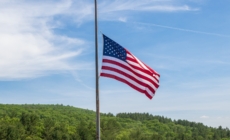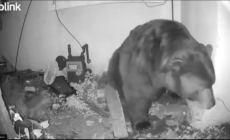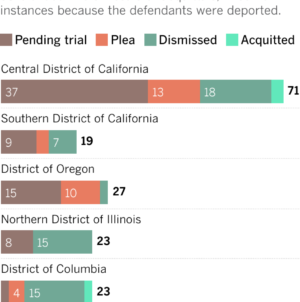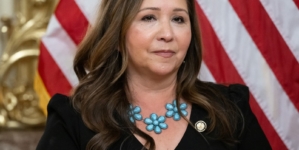-
Chatbots Can Meaningfully Shift Political Opinions, Studies Find - 9 mins ago
-
Democrat Says ICE Pepper-Sprayed Her, DHS Responds ‘Not True’ - 29 mins ago
-
FEMA rejects meeting with Newsom during low-profile push for L.A. fire funding - 44 mins ago
-
Ex-D.E.A. Agent Charged With Agreeing to Launder Millions for Cartel - 53 mins ago
-
Why Flags Are Half-Staff Today, This Weekend in the US - about 1 hour ago
-
Woman convicted of killing retired nurse to get cash for child’s cheerleading camp - about 1 hour ago
-
Olivia Nuzzi and Vanity Fair Will Part Ways - 2 hours ago
-
John Roberts Halts Court Ruling in Immigration Judges’ Speech Limits Case - 2 hours ago
-
MLB Insider Urges Cody Bellinger Rebuff Yankees for Eyebrow-Raising NL Cellar-Dweller - 2 hours ago
-
Judge Approves Release of Epstein Grand Jury Documents in Florida Case - 2 hours ago
Orca who carried dead calf’s body for weeks has lost another offspring
The appearance of a new orca calf in Washington’s Puget Sound last month was cause for celebration.
The young female, whom researchers named J61, was a new addition to the Southern Resident population, a federally protected endangered group of fish-eating killer whales stretching from British Columbia to Monterey. Its birth was doubly poignant: its mother, known as J35, attracted worldwide attention in 2018 when she carried the body of her dead calf for 17 days before releasing it to the sea.
But on New Year’s Day, scientists announced the “devastating news” that the young calf had died, and that its mother was once again carrying the remains of a lost offspring.
“The death of any calf in the [Southern Resident killer whale] population is a tremendous loss,” the Center for Whale Research, a nonprofit dedicated to the population’s study, posted Wednesday on Facebook. “The death of J61 is particularly devastating, not just because she was a female, who could have one day potentially led her own matriline but also given the history of her mother J35 who has now lost two out of four documented calves.”
The center confirmed the calf’s birth to J35 on Dec. 24. Immediately, observing researchers noted unusual unspecified behaviors by mother and calf that led them to worry for the young whale’s health.
“Early life is always dangerous for new calves, with a very high mortality rate in the first year,” the center posted on Facebook. “J35 is an experienced mother, and we hope that she is able to keep J61 alive through these difficult early days.”
When her second calf died shortly after birth in 2018, J35 carried the infant whale’s body with her over hundreds of miles, either gently pushing it along with her nose or holding its flipper in her mouth. As the days passed and J35 grew increasingly thin, other whales in the pod took over care of the young whale’s remains so that the mother could rest. J35 gave birth to a healthy male calf in September 2020.
The Southern Resident population is threatened by a decline in numbers of Chinook salmon, a key component of their diet, as well as increasing pollution and boat disturbances in the Salish Sea, which encompasses Puget Sound, according to the U.S. National Oceanic and Atmospheric Administration.
“It’s devastating to lose another orca calf, and the only remedy to this tragedy is doing much more to help the Southern Resident orcas,” said Brady Bradshaw of the Center for Biological Diversity in a statement. “Washington’s new recreational boat buffer will help give orcas space and peace to hunt, but state and federal agencies also need to restore wild salmon populations and crack down on pollution so orcas have enough safe food.”
Amid the sorrowful news of J61’s loss, the Center for Whale Research noted, there was also cause for hope. On Monday researchers observed a new young orca swimming with the J pod, which they named J62. This calf appears to be healthy.
Source link
















